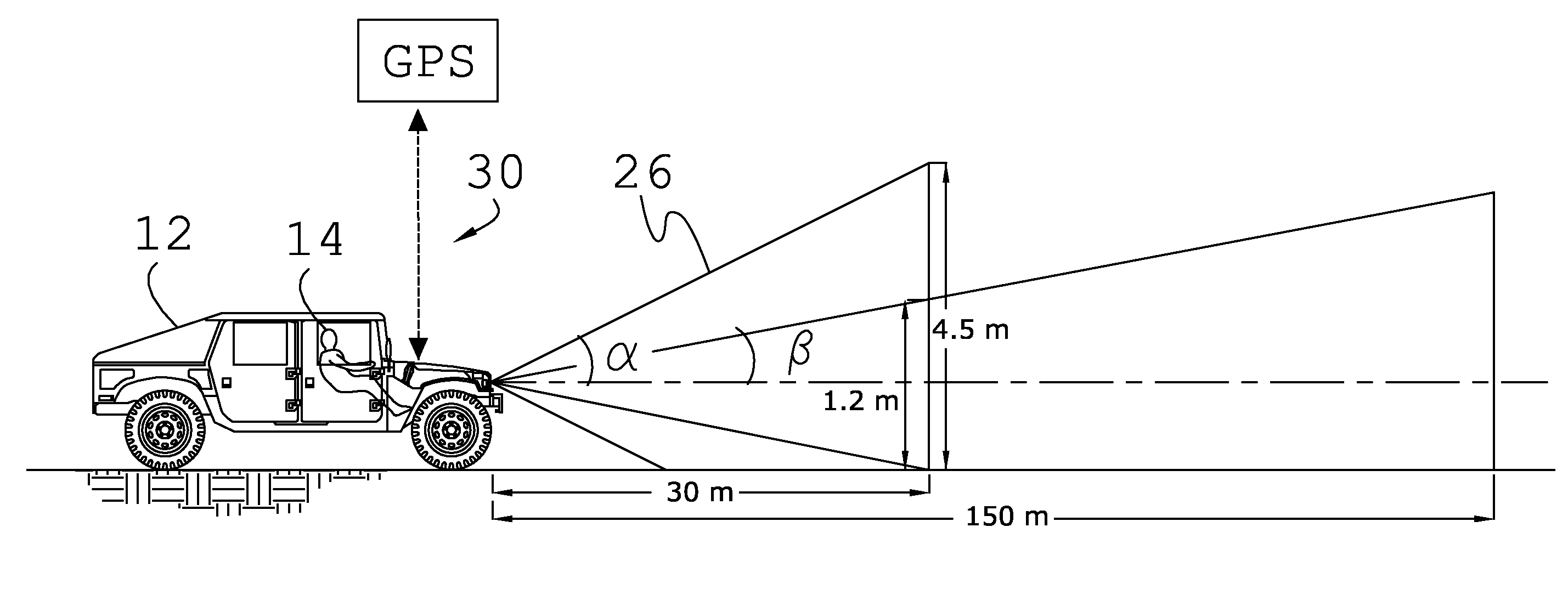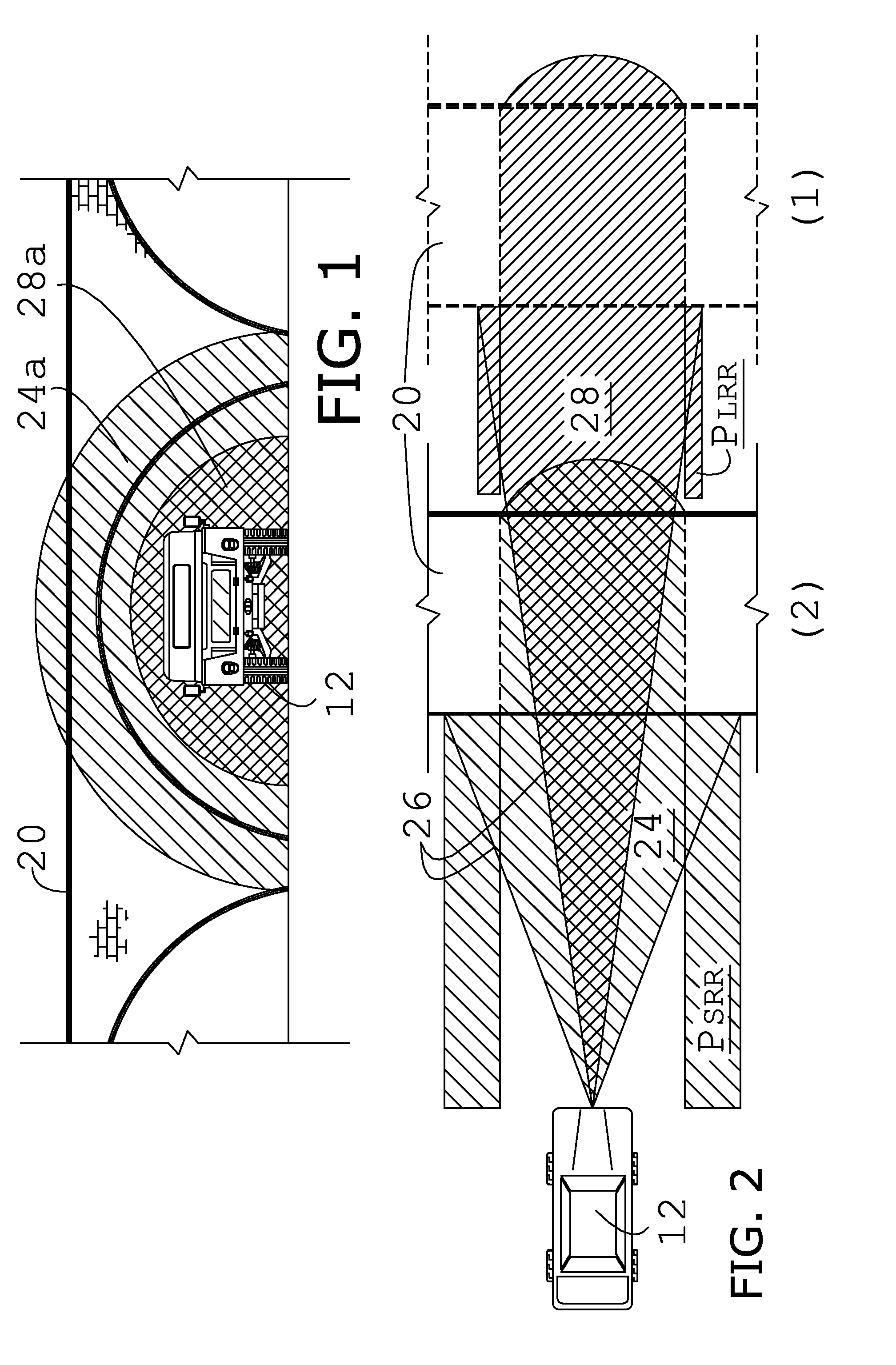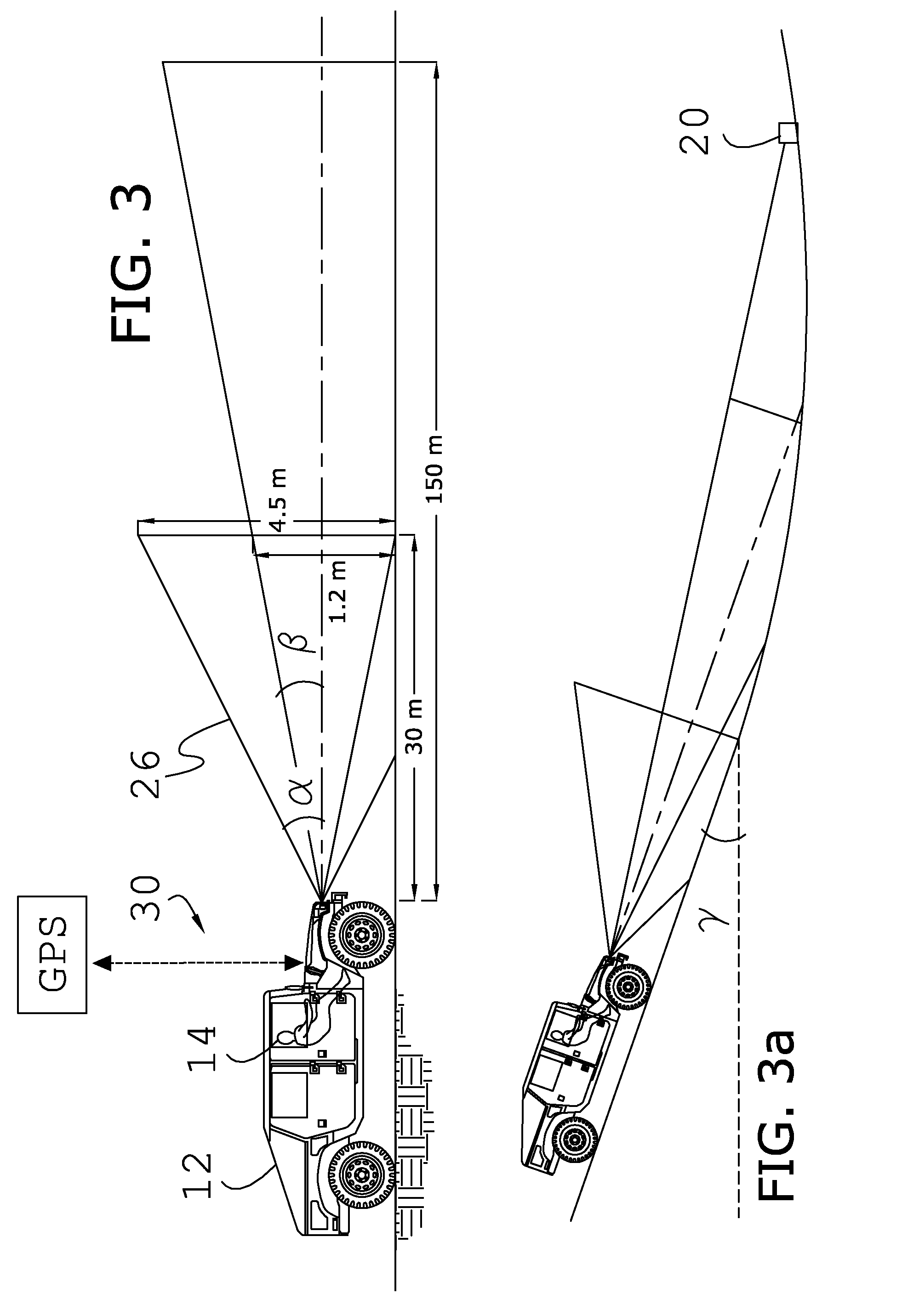Method of estimating target elevation utilizing radar data fusion
a radar and elevation technology, applied in the field of collision avoidance and target identification systems and methods, can solve the problems of generating a significant false alerts of in-path obstruction, and the number of false alerts generated thereby may produce a significant nuisance to the driver, and achieve the effect of reducing the number of false alerts
- Summary
- Abstract
- Description
- Claims
- Application Information
AI Technical Summary
Benefits of technology
Problems solved by technology
Method used
Image
Examples
Embodiment Construction
[0023]As shown in the illustrated embodiment, the present invention concerns a collision avoidance system 10 adapted for use with host vehicles 12, such as but not limited to automobiles, boats and aircrafts, and by an operator 14 (FIGS. 1 through 4). In general, the system 10 fuses the return signals of at least two radar sensors 16,18 to estimate elevation information for at least one target (or detected object) 20, such as the overpass shown in the illustrated embodiment.
[0024]As shown in FIG. 4, a digital fusion processor (DFP) 22 consists of an electronic control unit programmably equipped to perform the various algorithms and functions described herein, or more preferably, a plurality of communicatively coupled (i.e., connected by hard-wire or by a wireless communication sub-system) control units configured to perform parallel computations as part of a neural network. Alternatively, certain sub-routines may be performed by intermediate control units prior to delivery to the DF...
PUM
 Login to View More
Login to View More Abstract
Description
Claims
Application Information
 Login to View More
Login to View More - R&D
- Intellectual Property
- Life Sciences
- Materials
- Tech Scout
- Unparalleled Data Quality
- Higher Quality Content
- 60% Fewer Hallucinations
Browse by: Latest US Patents, China's latest patents, Technical Efficacy Thesaurus, Application Domain, Technology Topic, Popular Technical Reports.
© 2025 PatSnap. All rights reserved.Legal|Privacy policy|Modern Slavery Act Transparency Statement|Sitemap|About US| Contact US: help@patsnap.com



